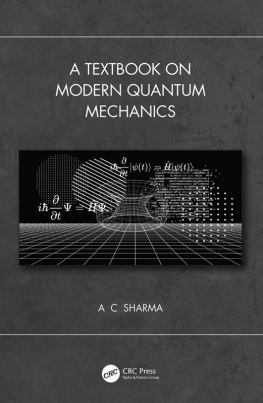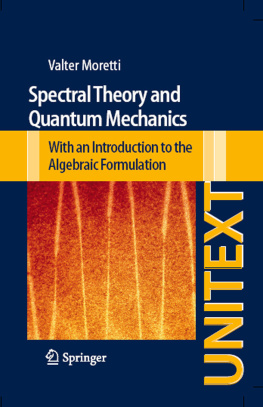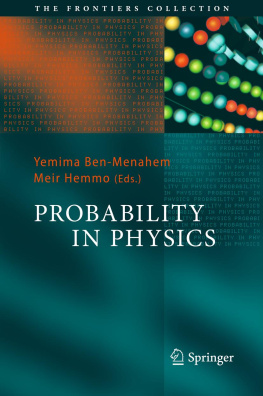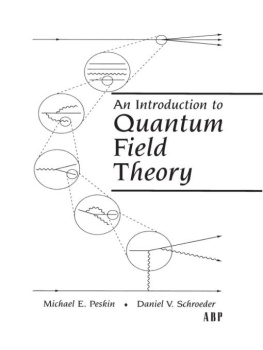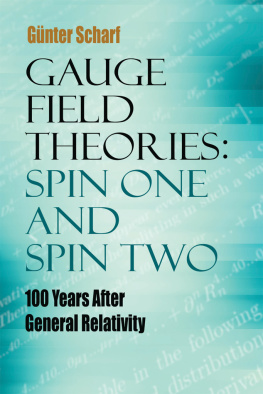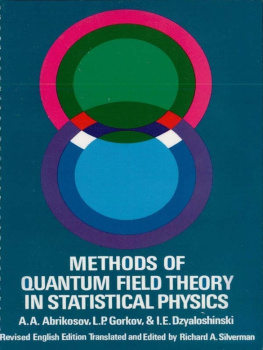Quantum Theory of Collective Phenomena
Geoffrey Sewell
School of Physics Queen Mary University, London
Dover Publications, Inc.
Mineola, New York
Copyright
Copyright 1986 by G. L. Sewell
All rights reserved.
Bibliographical Note
This Dover edition, first published in 2014, is an unabridged republication of the corrected paperback edition, originally published in the series Monographs on the Physics and Chemistry of Materials by Oxford University Press, in 1989 [first publication: 1986].
Library of Congress Cataloging-in-Publication Data
Sewell, Geoffrey L., author.
Quantum theory of collective phenomena / Geoffrey Sewell, School of Physics, Queen Mary University, London. Dover edition.
pages cm.
An unabridged republication of the corrected paperback edition, originally published in the series Monographs on the physics and chemistry of materials by Oxford University Press, in 1989 [first publication: 1986].
Includes bibliographical references and index.
eISBN-13: 978-0-486-79365-8
1. Quantum theory. 2. Statistical thermodynamics. 3. Phase transformations (Statistical physics) I. Title.
QC174.12.S48 2014
530.12dc23
2013048990
Manufactured in the United States by Courier Corporation
78044901 2014
www.doverpublications.com
Preface
The macroscopic properties of matter are governed by quantum mechanical processes that are collective, in that they involve the co-operation of enormous numbers of particles. Correspondingly, the quantum theory of macroscopic phenomena requires concepts, such as those of order and entropy, that represent collective effects in very large assemblies of particles. It is therefore radically different from the quantum theory of atoms and small molecules, where such concepts have no relevance.
Important developments in the quantum theory of macroscopic, or collective, phenomena have ensued from the discovery that the idealization of many-particle systems as infinite can reveal some of their intrinsic properties that would otherwise be masked by finite-size effects. The essential reason for this may be traced to the fact that this idealization permits qualitative distinctions between the descriptions of matter at the macroscopic and microscopic, or global and local, levels, whereas the corresponding distinctions for finite systems are merely quantitative. Thus, for example, an infinite system, unlike a finite one, admits inequivalent representations of its observables, corresponding to macroscopically different classes of states, such as those belonging to different thermodynamic phases. Consequently, it emerges that the model of an infinite system provides the conceptual structure needed for a theory of phase transitions, characterized by spontaneous symmetry changes as well as thermodynamical singularities. It also provides the framework for theories of irreversible processes, free from Poincar cycles, and metastable states, characterized by stability of a lower grade than that of thermal equilibrium.
The object of this book is to provide a systematic approach to the quantum theory of collective phenomena, based principally on the model of infinite systems. The book is addressed to physicists and chemists who are interested in understanding the scope of this approach, and also to mathematicians who may wish to study the structure and physical relevance of the model. Throughout the book, I have aimed to keep the mathematics as simple as possible, without sacrificing rigour. The book is thus designed to be readable on the basis of a knowledge of standard quantum theory and statistical mechanics, and of the essentials of mathematical analysis and vector space theory. Any additional mathematics required here, mainly elementary functional analysis, will be expounded in self-contained form, either in the main text or in the Appendices: for example, an Appendix to is devoted to an exposition of the elements of Hilbert space theory.
The book consists of three parts. provides a treatment of the phenomena of phase transitions, metastability and the generation of ordered structures far from equilibrium, within the framework of Parts I and II. This serves to co-ordinate the theory of these phenomena, placing the results obtained by various methods in a general scheme. It will be seen that, while some of these results can be obtained by traditional methods, there are also some whose very conception requires the idealization of infinite systems.
Since a number of the topics treated in this book are enormous subjects in themselves, I have had to be highly selective in my choice of material. The choice made here, while inevitably dependent upon my own interests, has been governed by the aim of providing a coherent and relatively simple approach to the theory of collective phenomena.
London
G. L. S.
January 1985
Acknowledgements
It is a great pleasure to thank Professor H. Frhlich, Editor of this series of monographs, for inviting me to write this book and for various constructive suggestions and criticisms during its preparation. I am also grateful to Professor O. Penrose for some very useful criticisms of a preliminary draft of the first part of the book. Finally, I would like to thank Mrs. M. Puplett for her patience and efficiency in typing the manuscript.
Contents
Part I
The generalized quantum mechanical framework
1
Introductory discussion on the quantum theory of macroscopic systems
Macroscopic systems enjoy properties that are qualitatively different from those of atoms and molecules, despite the fact that they are composed of the same basic constituents, namely nuclei and electrons. For example, they exhibit phenomena such as phase transitions, dissipative processes, and even biological growth, that do not occur in the atomic world. Evidently, such phenomena must be, in some sense, collective, in that they involve the cooperation of enormous numbers of particles: for otherwise the properties of macroscopic systems would essentially reduce to those of independent atoms and molecules.
The problem of how macroscopic phenomena arise from the properties of the microscopic constituents of matter is basically a quantum mechanical one. That quantum, rather than classical, mechanics is essential here is evident from the great wealth of phenomena in which quantum effects operate on the macroscopic scale. For example, the Third Law of Thermodynamics is a quantum law, the stability of matter are characterized in terms of macroscopic wave-functions of a purely quantum nature.
The quantum theory of macroscopic systems is designed to provide a model relating the bulk properties of matter to the microscopic ones of its constituent particles. Since such a model must possess the structure needed to accommodate a description of collective phenomena, characteristic of macroscopic systems only, it is evident that it must contain concepts that are qualitatively different from those of atomic physics.
In order to see the nature of the problems involved here, we start by noting that a macroscopic system is composed of an enormous number, e.g. 1024, of interacting particles of one, or possibly several, species. At a microscopic level, therefore, its properties are governed by the Schrdinger equation for this assembly of particles. However, in view of the huge and where, consequently, the essential role of this equation in the many-body problem is that of a key to interrelationships between appropriate macroscopic variables, as in thermodynamics or hydrodynamics. This signifies that the many-body problem should be cast, ab initio


